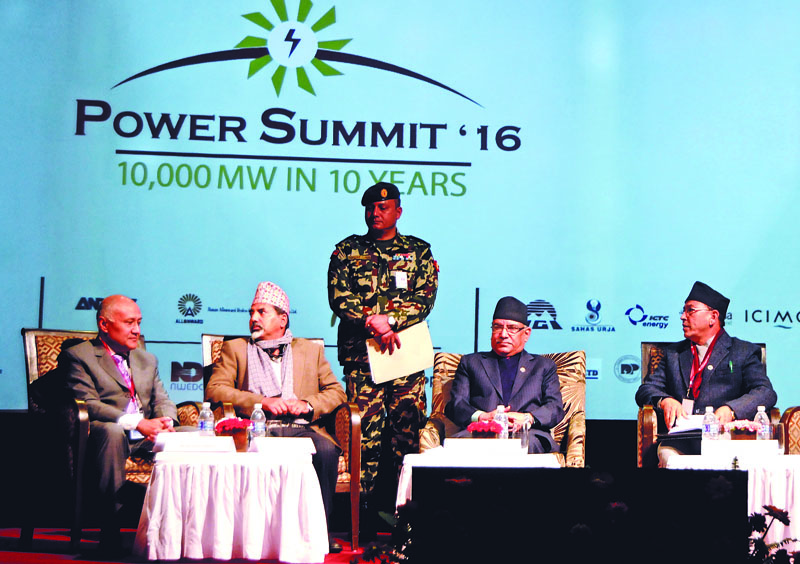IPPs set to overtake NEA in power generation by year-end
Kathmandu, February 25
The contribution of independent power producers will surpass total electricity generation of Nepal Electricity Authority by 2017-end as hydro projects being developed by IPPs, with total installed capacity of around 200 megawatts, are expected to be completed by end of this year.
Of the total 960 MW installed capacity at present, NEA projects contribute 530 MW whereas contribution of projects of private sector developers is around 430 MW.
NEA has just two projects — 30MW Chameliya and 14MW Kulekhani III — that will be completed by the end of 2017. On the other hand, private sector has over half-a-dozen projects that will begin commissioning power within this year — 25MW Kabeli B1, 27MW Dordi Khola, 25MW Upper Dordi A, 40MW Khani Khola-1, 22MW Chaku A and 10MW Sikles Hydropower, among others. Thus, by 2017-end, total generation of IPPs is expected to stand at 630 MW against the current 574 MW (including Chameliya and Kulekhani III) of NEA.
“Private sector players push harder to finish projects on time because cost overruns adversely affect return on equity,” said Shailendra Guragain, president of Independent Power Producers’ Association Nepal.
NEA projects, however, are often delayed.
For instance, the 30MW Chameliya Hydel Project was supposed to be completed by 2011. Based on calculation of revenue loss and variation made in the project, per megawatt cost for construction of Chameliya hovers at around Rs 500 million compared to the ideal cost of Rs 180 million in hydropower development.
Likewise, Upper Trishuli 3A Hydroelectric Project has also faced delays — the NEA board has already extended the deadline three times. The project, initially supposed to be completed by June 30, 2011, was extended to April 30, 2013. It was then extended to June 30, 2016, and in December last year, the NEA board again extended the deadline to April 30, 2019.
IPPs have been performing better than NEA in implementing generation projects. The variation cost and revenue loss is high, which is weakening the financial health of the power utility.
A recent report of World Bank Group titled ‘Powering Recovery’ has also suggested need for massive reforms in NEA to bring to fruition the government’s vision of developing 10,000 MW hydro electricity in 10 years.
The report has also mentioned that NEA (in between 2002 and 2016) developed merely 50 MW hydroelectricity compared to 250 MW by the private sector in the same period.






